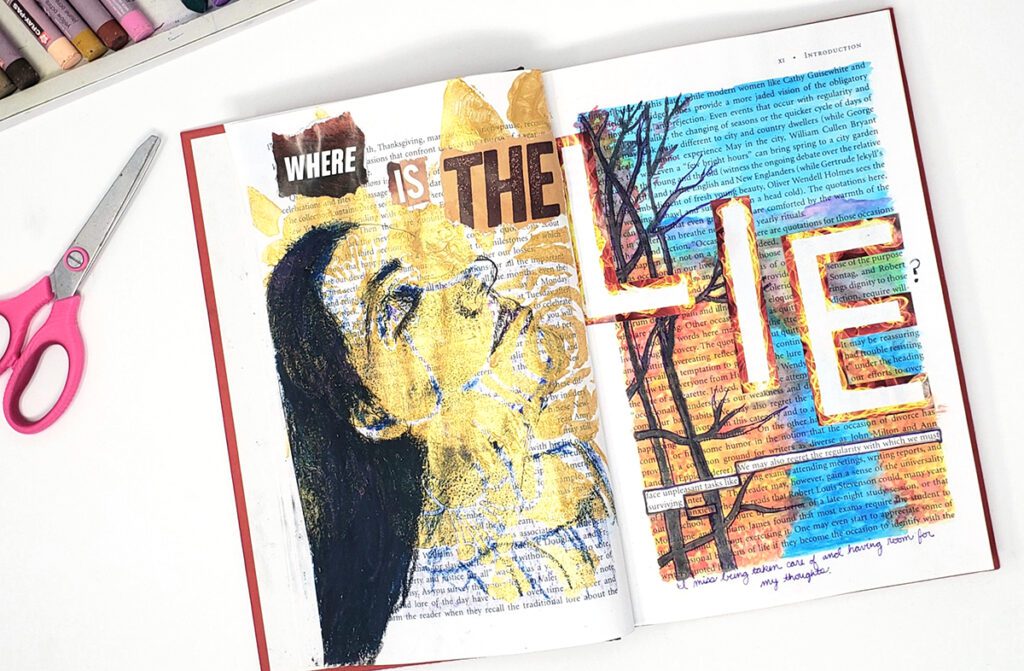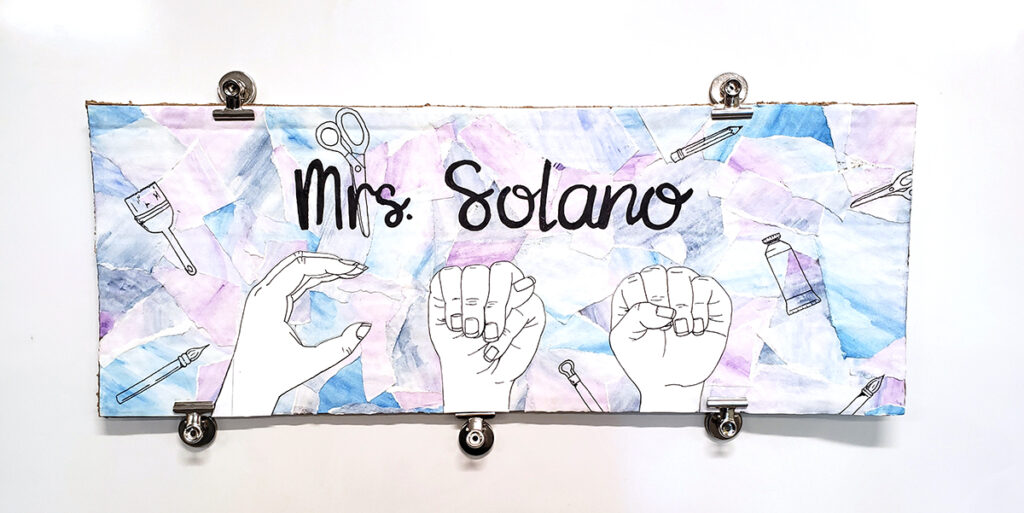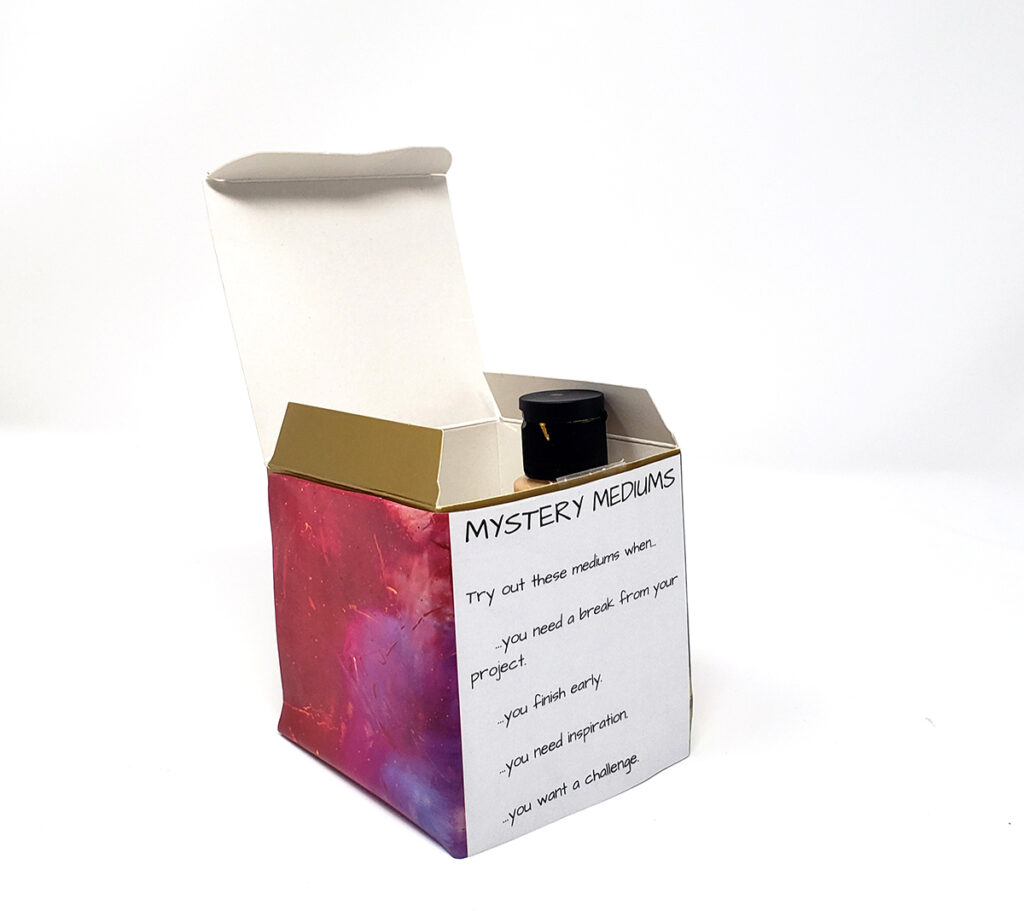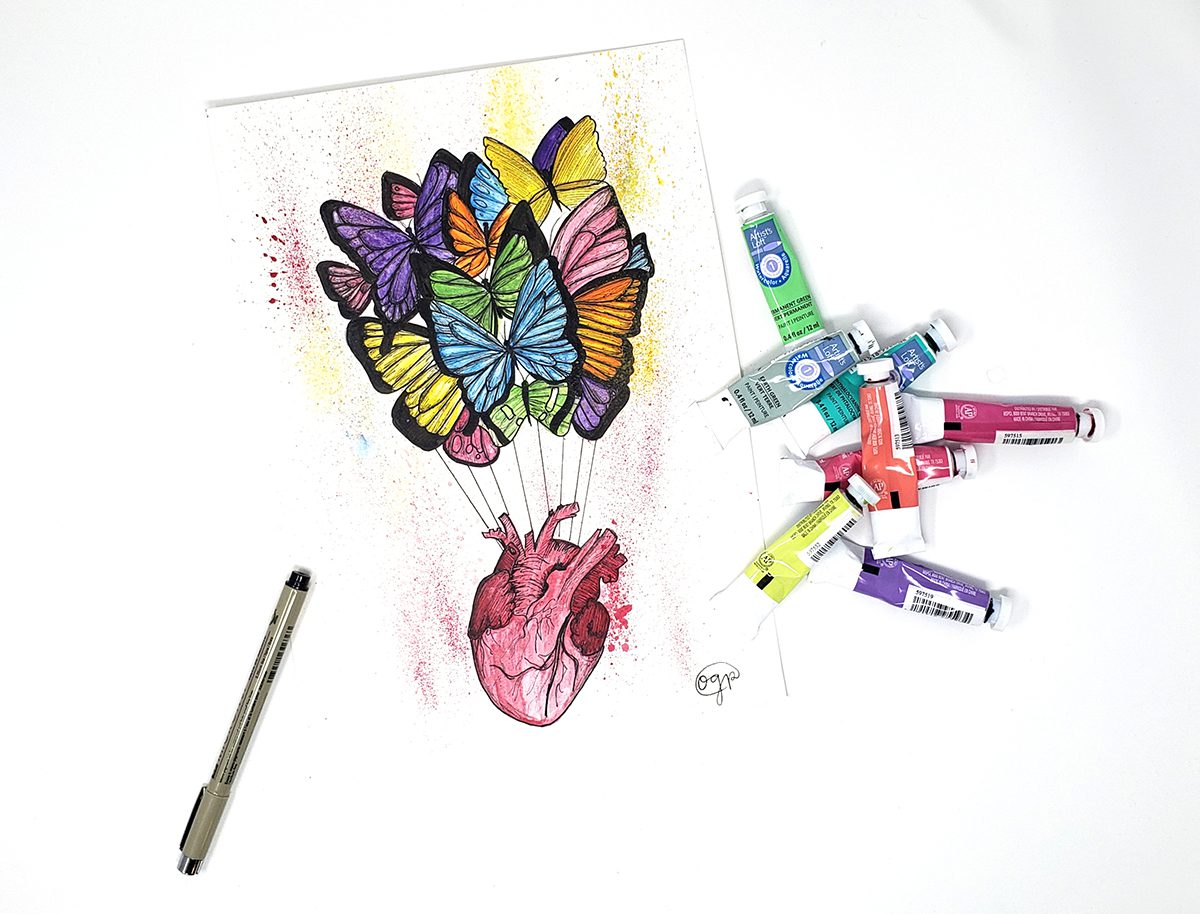Our students bring their struggles and joys with them into the art room. Unfortunately, many of our students have experienced challenges and are hurting more than they are celebrating. Sometimes, students will share these things with us, but often we need to make inferences based on their behaviors. This can look like misbehaving, lacking engagement, or being short on creativity. Getting to the root of how students are really doing can leave us feeling ill-equipped to meet their needs. While you are an art teacher and not a licensed therapist, you can add therapeutic practices into your art room as a way to support your students and engage their imagination.
Here are therapeutic practices in the art room, how they engage the imagination, and their benefits.
Jennifer Ferriday, an expert on therapeutic art practices, shares several attainable ways to infuse therapeutic practices in the art room. As a daughter of an art teacher and a former art teacher herself, she has a wide range of experience in the art room with students of all ages. Jennifer also continued her work and research in a residential psychiatric unit. At AOEU, she is a Faculty Development Specialist, Associate Professor, and Student Coach.
What are therapeutic practices?
First, it’s important to recognize the difference between art therapy and therapeutic practices. According to the Art Therapy Credentials Board, art therapy is psychotherapy using “art media, the creative process, and the resulting artwork as a therapeutic and healing process.” Within this process, art therapists diagnose and treat impairments. Art therapy can only be done by a licensed art therapist.

Art teachers cannot use art to diagnose students’ disorders. However, we can use therapeutic practices. Therapeutic practices are strategies to promote healing and social-emotional learning. As an art teacher, you can apply them in many different ways. Look into the Therapeutic Practices in Art Education course for more ways to integrate the ideas below into your classroom. Get in touch with an admissions counselor today for more information.
Get in touch with an admissions counselor!
Here are three therapeutic practices to include in your classroom.
1. Try visual journaling.
If students are intimidated by making deep and meaningful artwork, take a step back and try visual journals. Visual journals give students a low-risk opportunity to explore ideation and personal feelings as well as practice techniques. Provide prompts to give students a place to start exploring their inner thoughts and feelings. Consider being the only one who looks at their visual journal so students feel safe to express themselves.
If you want more tips on how to use visual journals, check out the Pack, Exploring Visual Journals at the Secondary Level in PRO Learning.

2. Incorporate other modes of expression.
Creating connections between visual art and other disciplines can have positive effects. It can appeal to students who aren’t “into art” or confident with their art skills but enjoy other content areas. It can also provide choices for students, giving them a sense of control and comfort.
Here are some ways to bring other forms of expression into the art room:
- Music
Play music, let students listen to their own music, create an art-inspired music video, or sing about the elements of art. - Movement
Students can act as models for gesture drawings, paint with their feet, or incorporate sign language. - Reflective Writing
Reflection is a natural aspect of the artistic process. Have students write about their process, intent, results, and next steps to encourage deeper thinking. - Poetry
Students illustrate a poem, arrange the words of the poem into a shape, or draw on top of a poem. This can help them think about the meaning of the poem. - Drama
Provide opportunities for students to act out art history, make props for a play, or create video reflections instead of written ones. - Mindfulness
In Employing Mindfulness Via Art in Education, Jodi Patterson explains how both art and mindfulness allow the person to purposefully organize thoughts, feelings, and experiences creatively. Try guided imagery by talking students through an activity or drawing by using words and sounds. Students can create mental or physical pictures of what they see during this exercise.

3. Transition to a choice-based curriculum.
The art room can be a loud and unpredictable place. As mentioned above, providing choices can help students feel like they have some control and give them a sense of safety. There are many areas in the art room where you can provide choices.
Here are three areas you can empower students:
- Material
Some students may not be able to use all of the art supplies and materials due to ability, preference, or availability. Allow students to select an option that works best for them. For instance, students making collages can tear or cut paper with regular or spring scissors. - Theme
Use big ideas or themes to provide guidance and structure. Think about broad ideas that students can interpret in a variety of ways. Or consider how students can communicate a specific word or phrase with their background and personal experiences.
- Subject Matter
The best artwork often stems from meaningful and personal connections. Let students decide if they want to do a self-portrait or a portrait. Or, let them determine which items to include in a still life that represents them.
If you need more help transitioning to a choice-based curriculum, get started with the course, Choice-Based Art Education.
How do therapeutic practices engage the imagination?
Therapeutic practices encourage deeper thinking and the exploration of feelings and beliefs, both of which engage the imagination. However, there are specific techniques you can use to help students tap into their imagination even further.
These three therapeutic practices further engage the imagination.
1. Take risks with vulnerability.
Play and experimentation are central to the imagination. Next time you want to introduce an art technique, let students discover it for themselves! For example, say you want students to learn wax resist with watercolors and oil pastels. Instead of starting with a demonstration, give them the supplies with basic instructions for how to use them. Then, let them see what happens when they play with the two materials together! Review their findings as you debrief with your own demonstration.

2. Focus on details.
It may seem counterintuitive to focus on real details if you want students to work on growing a world they create in their minds. Help students recognize details about what they see, then gently push them to make new connections through similes and metaphors.
For example, if a student is interested in butterflies, ask them to list everything they feel when they see one. As they dig deeper and build their list, they may say something like, “I feel happy and light, like I could fly away with them!” This statement reflects a connection between butterflies and the student’s desire to fly. This sounds like a great starting point for a Surrealist artwork full of imaginative image juxtapositions!

3. Critique without judgment.
The ability to receive and apply constructive criticism is important. However, we should remember to frame it in a kind way because positive interactions with art increase students’ self-confidence. One way to do this is to focus on what is strong in the artwork versus prioritizing areas of improvement.
For example, if a student’s artwork looks like scribbles, don’t label it as hurried or unrefined. Instead, tell them you noticed they pressed down hard and moved their drawing utensil in many directions when creating their artwork. The student may not have realized their technique impacted the final drawing. Observing without making judgments can help your students see their art and their processes in a different way.
What are the benefits of therapeutic practices?
While engaging the imagination is a major benefit, therapeutic art practices have other benefits as well.
Here are three benefits of therapeutic practices.
1. Accelerates cognitive development.
Combining art with therapeutic practices accelerates cognitive development. During therapeutic art practices, students contemplate personal beliefs, practices, and thought patterns. They have the opportunity to explore alternative ways of thinking during the activity and gain a better understanding of themselves.
2. Supports the healing process.
The ultimate goal of incorporating therapeutic practices is to promote healing. In Healing Trauma With Art and the Affective Turn, Katie Fuller says, “Students use art to reflect on the past from their present perspectives so they may understand how to move through and past the embodied challenges of both. Within these affective communities, a true sense of agency could emerge.” While looking at and making art can be enlightening and comforting, adding therapeutic practices allows students opportunities to work through their struggles and provide the potential for change.
3. Increases engagement.
Engagement naturally increases when teachers use therapeutic practices. When students are no longer reluctant to take risks, are no longer afraid of judgment, and are no longer forced to use certain mediums, they feel free to explore and create. Your room of reluctant students transforms into a studio full of artists. Let your students explore in a safe setting and see how much more invested in your class they are!

Despite how much you do and how it may feel, art teachers are not therapists. However, just because you cannot diagnose or treat doesn’t mean you can’t support students as they navigate struggles. Do this by intentionally adding therapeutic practices to your curriculum, such as visual journaling or elements of a choice-based curriculum. Engage the imagination even more by letting your students take risks, focus on details, and critique without judgment. These practices will encourage cognitive development, healing, and engagement. Add them to your classroom and curriculum to see what benefits your students experience!
What therapeutic practices do you incorporate in your art room?
If you tried any of the practices above, how have you seen them benefit your students and their artwork?
Magazine articles and podcasts are opinions of professional education contributors and do not necessarily represent the position of the Art of Education University (AOEU) or its academic offerings. Contributors use terms in the way they are most often talked about in the scope of their educational experiences.





